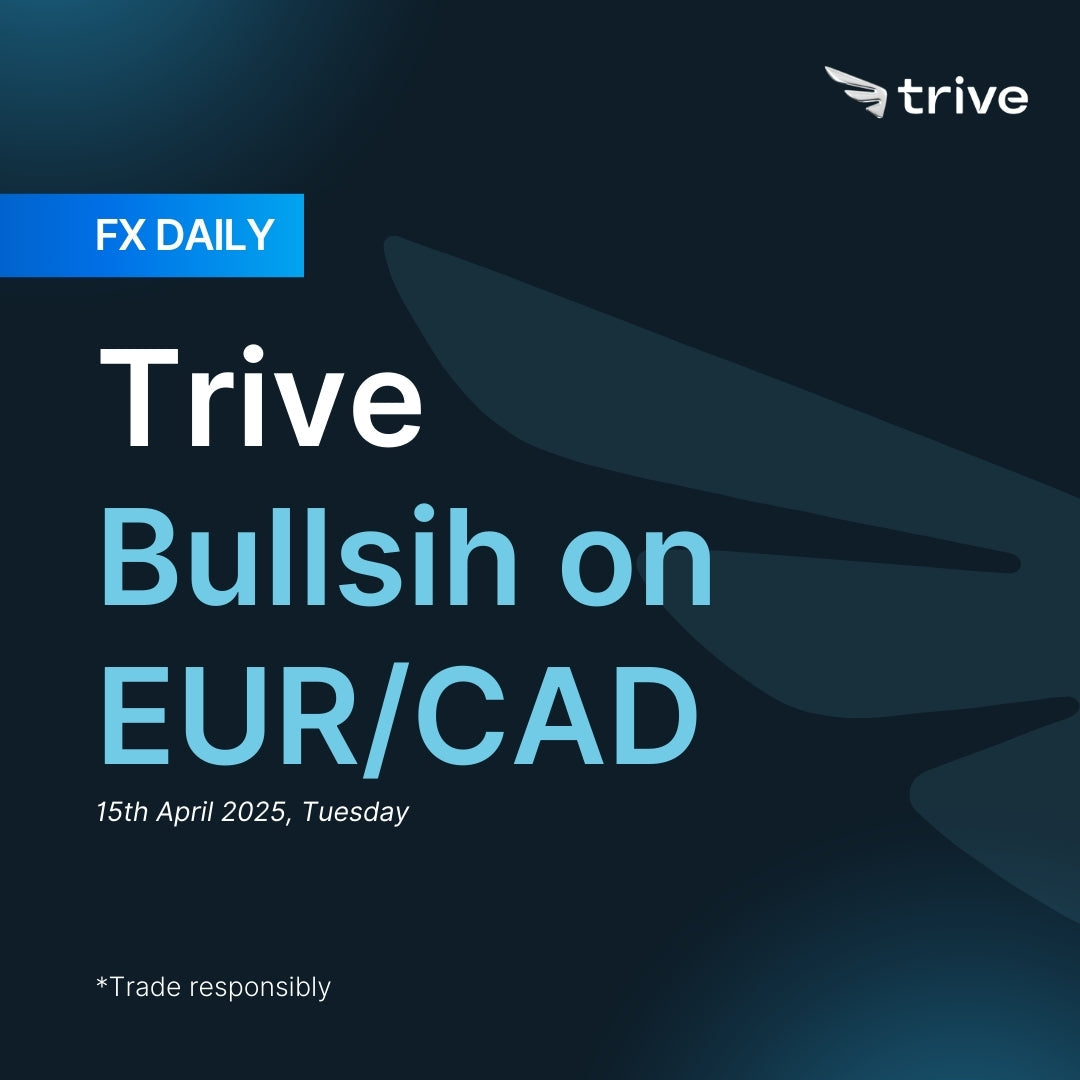FX Daily: Trive Bullsih on EUR/CAD

The baseline outlook for the EUR remains bullish, as it is the world's second most liquid currency during times of crisis. In contrast, the CAD is expected to remain under pressure amid ongoing uncertainty.
EUR: Alternative of USD
The EUR has been one of the best-performing currencies since the U.S. tariff announcement, outperforming traditional safe haven currencies such as JPY and CHF. The primary reason lies in its status as the second most liquid currency in the world and its role as a preferred alternative to the dollar for global FX reserves. At the same time, market participants appear relatively optimistic that the EU is not inclined to escalate trade tensions with the U.S., particularly after the EU agreed to a 90-day pause in countermeasures that were scheduled to take effect on April 15. Additionally, the prospect of increased fiscal spending across Europe—especially in Germany—has added structural support to the euro, making it more attractive than in previous years.
Looking ahead, the market's attention will shift to the April ECB meeting, where a 25bp rate cut is fully priced in, despite the presence of some divergent views among Governing Council members. The primary focus will be on forward guidance and updated economic projections. On the guidance front, markets will be watching for any indications that the ECB is preparing to wind down its easing cycle in the coming months. On the projections side, this will be the first meeting to include new staff economic forecasts, which are expected to factor in Germany’s anticipated fiscal stimulus—likely resulting in upgrades to the ECB’s medium- and long-term growth and inflation outlooks. As a result, the meeting could deliver another “hawkish cut,” potentially leading to further euro strength. Beyond the ECB meeting, market participants will also closely monitor trade developments. As long as trade tensions persist and the “sell America” theme continues to build, euro-area assets may stand out as one of the few viable destinations for capital rotating out of U.S. markets—offering additional support to the EUR.
In short, barring a strong resurgence of the “U.S. exceptionalism” narrative—characterized by robust U.S. growth, a resilient consumer, and subdued inflation—and assuming Europe does not fall short in its efforts to reform and stimulate its economy, the baseline outlook for the EUR remains bullish, given it’s simply the world’s second most liquid currency in such crisis.
CAD: CPI and BoC in focus
The CAD has underperformed modestly since the Trump tariff announcement and remains vulnerable amid rising global trade uncertainty. While Canada was not directly targeted by the April 2nd tariff list, and a 90-day pause on its existing 10% tariff was granted, the overall trade hit remains meaningful. When accounting for non-USMCA tariffs, autos, and steel/aluminum levies, Canada still faces an effective trade-weighted tariff rate of around 12%. This represents a significant drag for an economy so closely tied to global and especially U.S. trade flows. As such, any rise in the probability of a U.S. recession could amplify CAD downside, given the Canadian economy’s tight linkage with the U.S. cycle. Domestically, recent data signals growing headwinds. The latest Canadian employment report showed a sharp decline in jobs, particularly within wholesale and retail trade—industries typically sensitive to external demand and trade disruptions. This suggests that even the anticipation of trade frictions may already be feeding into weaker labor market dynamics.
Looking ahead, market attention will turn to the April 16th BoC meeting. While the Bank had flagged upside risks to inflation last month, supported by the Q1 Business Outlook Survey showing rising inflation expectations, the recent deterioration in growth could shift the balance of risks. If the BoC continues to emphasize inflation and opts to stay on hold, markets may still lean toward deeper rate cuts in subsequent meetings as growth momentum falters. Conversely, if the BoC pivots back to focus on downside growth risks, it would be interpreted as a dovish turn. Either way, the asymmetry in risks points to continued softness in CAD. In short, as long as trade tensions remain unresolved and U.S. growth uncertainty persists, the CAD outlook stays bearish. Even with a temporary 90-day tariff pause, structural vulnerabilities, softening domestic data, and the BoC’s policy ambiguity all point toward fading rallies in the loonie over the medium term.
 EUR/CAD 4H
EUR/CAD 4H
Disclaimer
This material is provided for informational purposes only and does not constitute financial, investment, or other advice. The opinions expressed in this material are those of the author and do not necessarily reflect the views of Trive International. No opinion contained in this material constitutes a recommendation by Trive International or its author regarding any particular investment, transaction, or investment strategy. This material should not be relied upon in making any investment decision.
The information provided does not consider the individual investment objectives, financial situation, or needs of any specific investor. Investors should seek independent financial advice tailored to their individual circumstances before making any investment decisions. Trive International shall not be liable for any loss, damage, or injury arising directly or indirectly from the use of this information or from any action or decision taken as a result of using this material.
Trive International may or may not have a financial interest in the companies or securities mentioned. The value of investments may fluctuate, and investors may not get back the amount they originally invested. Past performance is not indicative of future results.
For more information about Trive International, please visit http://trive.com/int
Additional Information
Investing involves risk, including the potential loss of principal. Diversification and asset allocation strategies do not ensure a profit or guarantee against loss. The content in this material is subject to change without notice and may become outdated or inaccurate over time. Trive International does not undertake any obligation to update the information in this material.
By accessing this material, you acknowledge and agree to the terms of this disclaimer. If you do not agree with these terms, please refrain from using this information.
暂无评论
主页
特里夫
TriveHub





0条评论